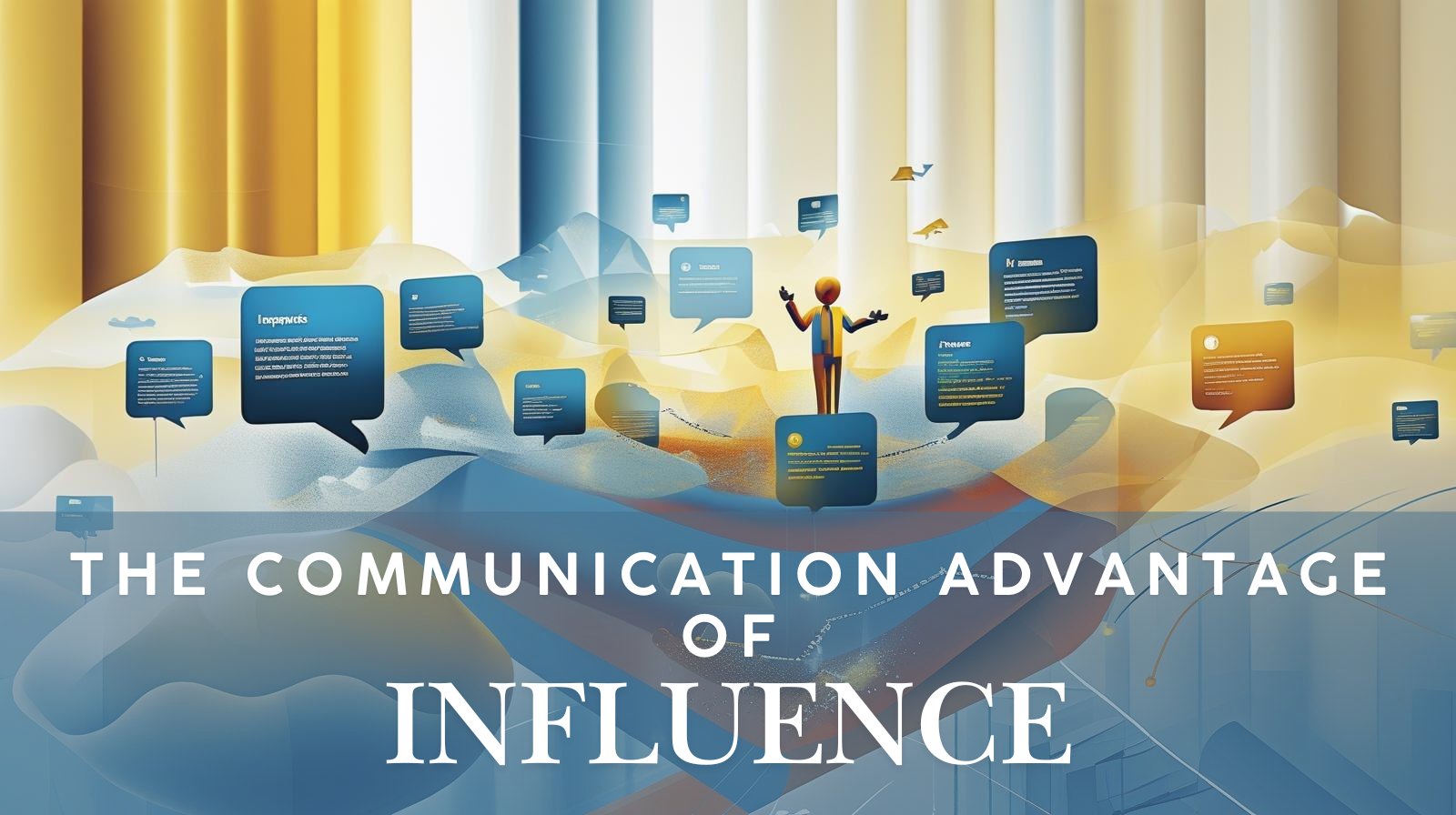When we hear the word influencer today, many of us think of social media influencers—people who invest in their channel, their message, and their audience until brands see them as valuable partners.
It doesn’t happen overnight. It requires consistent communication, listening to your audience, clarifying and sharpening your message, and staying true to it over time. Do those things well, and you earn the right to be called an influencer.
Well, the same is true in the workplace. We’ve all worked with someone who didn’t have the biggest title in the room, but everyone listened when they spoke. Their words carried weight. Their ideas gained traction. Their presence made people pay attention.
That’s influence.
And it’s the result of consistent, ongoing good communication no matter where you are.
Consider this: If communication is the essential and master skill of professional success, listening the hidden superpower, and clarity the amplifier, then influence is the outcome. It’s what happens when your communication connects so deeply that people don’t just hear you, they follow you.
Why Influence Matters
In today’s workplace, titles alone don’t move people. Gen Z and young professionals aren’t impressed by hierarchy and older generations can sometime become disillusioned by leadership though they are less likely to quit on a leader they don’t connect with like younger generations will.
Your position of authority may get you compliance, but influence earns commitment.
True influence isn’t about telling people what to do—though leadership will sometimes require it. It’s about inspiring them to want to do it. And that’s the difference between short-term results and long-term impact.
Some of the most impactful people in an organization don’t have “leader” in their job title. Yet their voices shape culture, decisions, and momentum.
Why? Because they’ve mastered how to communicate in ways that resonate.
Titles may give you authority. But real communication gives you influence.

The Building Blocks of Influence
Influence doesn’t happen by accident. It’s built on key communication practices:
- Connection: Relating to people where they are, not where you wish they were.
- Clarity: Delivering messages people can act on.
- Credibility: Matching your words with consistent action.
- Empathy: Understanding perspectives before trying to persuade.
When these elements are in place, your communication moves from simply passing information to shaping direction.
Practical Influence in Action
So how do you apply this in everyday work?
- Frame ideas for buy-in: Instead of “Here’s what I want,” try, “Here’s how this helps us succeed together.” It’s about shifting the frame from self-centered (what I want) to shared success (what benefits us).
- Adapt to your audience: Just like influencers tailor content for their followers, you need to adapt how you communicate with executives, peers, or new hires—always with respect and authenticity.
- Tell stories, not just stats: Facts inform, but stories inspire. A single story of impact often carries more influence than a spreadsheet of numbers. Behind every data point is a story worth telling.
- Listen first, then speak: Influence grows when people feel you understand them before you try to convince them. That’s why listening is your superpower.
The Leadership Advantage of Influence
Leadership without influence is hollow.
Great leaders know their vision doesn’t matter unless people grab hold of it. That’s why you must invest in communication—not just to share information, but to inspire action.
Influence is what transforms instructions into ownership. It’s what turns a group of employees into a motivated team.
The Bottom Line
Influence is the highest expression of communication.
When you combine listening, clarity, empathy, and consistency, your communication doesn’t just inform—it inspires. That’s when you stop pushing people forward and start drawing them with you.
Influence in the workplace isn’t so different from influence online. It’s not about being the loudest voice, it’s about being the clearest, most consistent, and most connected one.
That’s the real Communication Advantage.
✅ That completes the 4-part series The Communication Advantage. Take an opportunity to read any article you may have missed using the links below.


